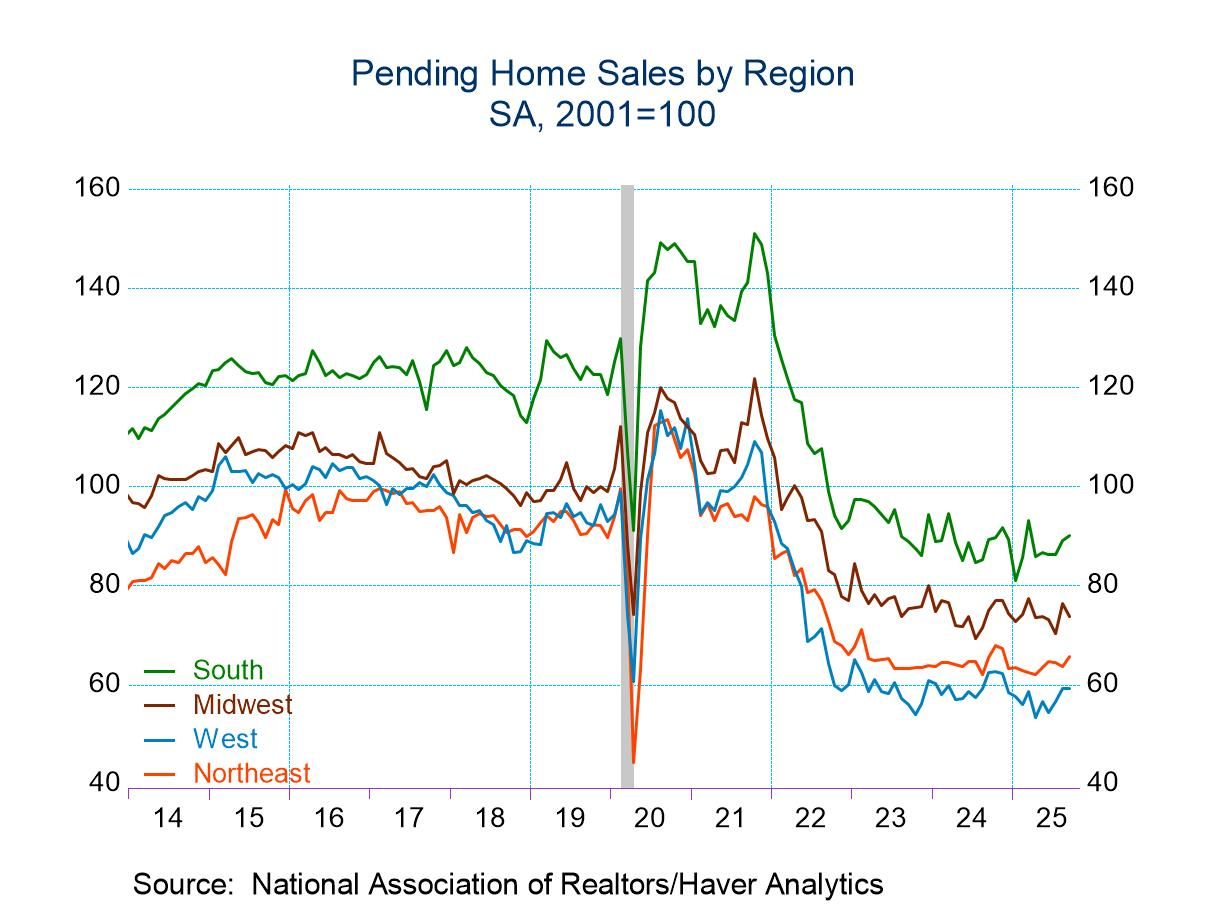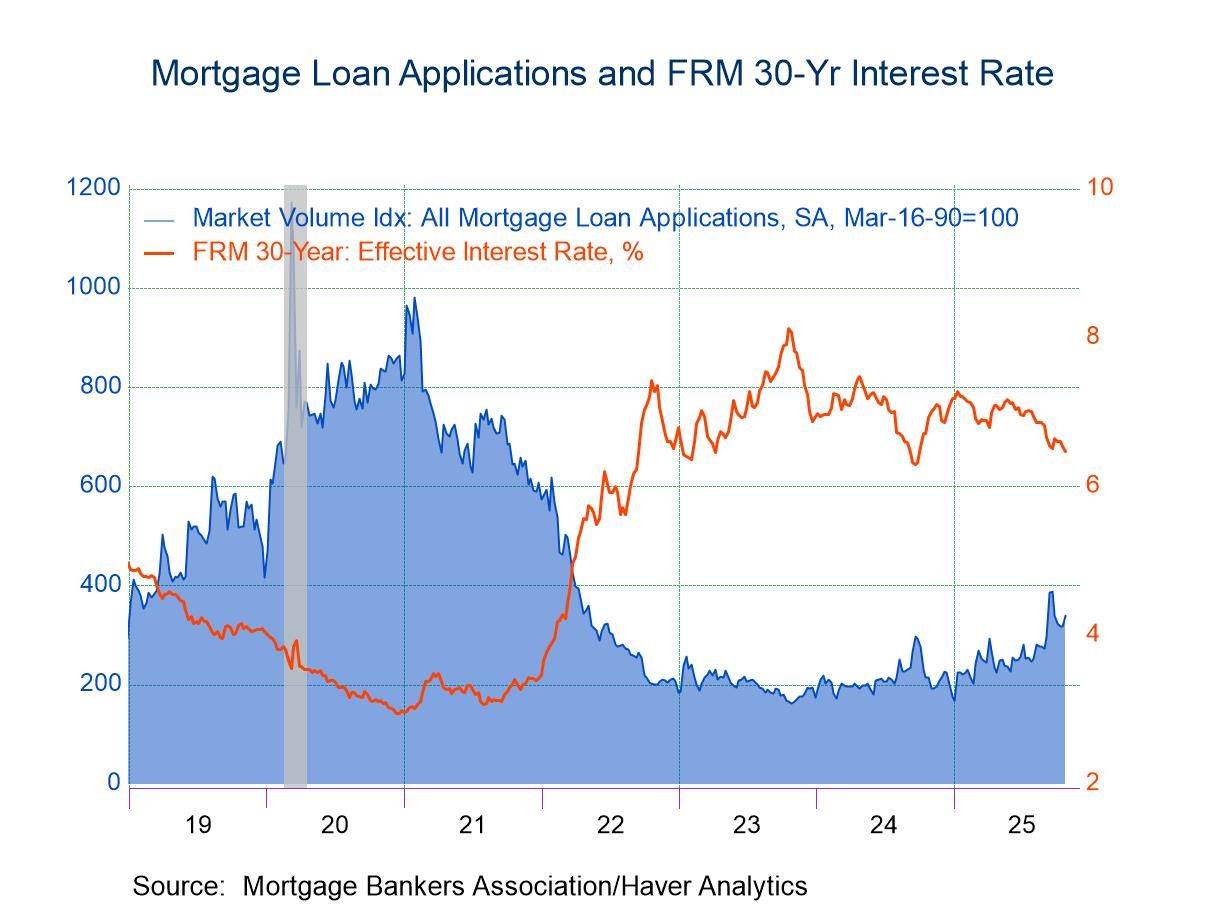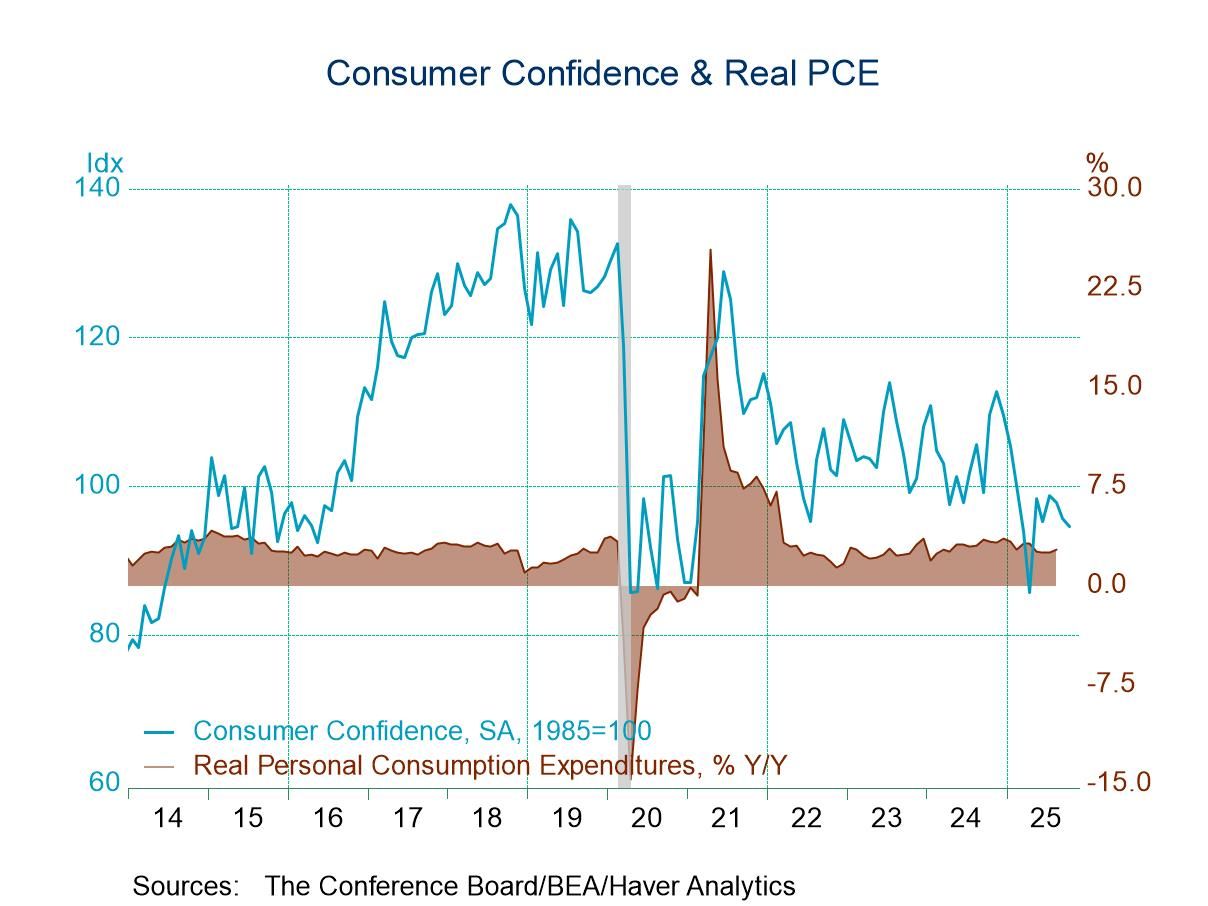 Global| Jul 18 2007
Global| Jul 18 2007Employment Rises Sharply in UK, Unemployment Down
Summary
In a marked shift, UK employment surged 63,000 in the 3 months centered on April, a second successive gain, as the March period saw 31,000 more employed. From three months ago (the style of comparison that the UK's Office for National [...]

In a marked shift, UK employment surged 63,000 in the 3 months centered on April, a second successive gain, as the March period saw 31,000 more employed. From three months ago (the style of comparison that the UK's Office for National Statistics [ONS] generally emphasizes) the latest figure was 93,000 higher. Notable as well, full-time employment gained 117,000 from 3 months back, while part-time work decreased 25,000.
Unemployment, measured by the ILO definition, is down 34,000 from 3 months ago, a 2% decline. The unemployment rate consequently dipped to 5.4% from the 5.5% that has prevailed most of the last year. The more widely followed unemployment gauge in the UK, the "claimant count rate", is showing further declines: a single monthly figure, it stood at 2.7% in May and June, the lowest since September 2005 and down from a recent peak of 3.0% last October. The number of claimants in June was 864,100, down almost 10% from their peak of 956,700 last September.
We last considered these data two months ago, and we noted then that job vacancies had risen, suggesting that the employment environment might do better, as it in fact has. At that time, vacancies were up 20,000 from 3 months previous, reaching 647,400 in April. This figure has been revised down slightly to 644,100, and in May and June vacancies increased another 6,000 to 650,100. The recent gains, albeit small, were in transportation and communications, and finance and business services.
So we are enthusiastic about the employment increase in the UK, believing it is a sign of economic health. Press reports, however, highlight the push some economists and journalists think it portends for inflation and interest rates. This may eventually occur, although accompanying wage data indicate that cost pressures remain moderate. The key average earnings index had a 3.5% "headline rate" for the 3 months ended May, down from 3.6% excluding bonuses in February and 4.6% including bonuses. It may be, then, that causation is running the other way: perhaps because wages remain moderate, businesses have increased their hiring.
| UK Labor Force Survey & Related Labor Data | Jun 2007 | May 2007 | Apr 2007 | Mar 2007 | Year Ago | 2006 | 2005 | 2004 |
|---|---|---|---|---|---|---|---|---|
| Employment* (3Mo Avg, SA, Thous) |
-- | -- | 29075 | 29012 | 28,895 | 28,960 | 28,730 | 28,465 |
| Chg from 1 & 3 Months Ago | -- | -- | 63/93 | 31/-10 | +15 (MoAvg)0.6% y/y | 0.8% | 0.9% | 1.0% |
| Unemployment Rate* (3Mo Avg, SA, %) | -- | -- | 5.4% | 5.5% | 5.4% | 5.4% | 4.8% | 4.8% |
| Claimant Count (Monthly, Thous) |
864.1 | 877.9 | 889.7 | 905.7 | 947.1 | 944.7 | 861.7 | 853.3 |
| Claimant Count Rate (SA, %) | 2.8 | 2.9 | 2.9 | 2.9 | 3.0 | 3.0 | 2.7 | 2.7 |
| Vacancies (Monthly, Thous) |
650.1 | 631.8 | 644.1 | 643.7 | 593.7 | 594.6 | 617.0 | 629.0 |
Carol Stone, CBE
AuthorMore in Author Profile »Carol Stone, CBE came to Haver Analytics in 2003 following more than 35 years as a financial market economist at major Wall Street financial institutions, most especially Merrill Lynch and Nomura Securities. She had broad experience in analysis and forecasting of flow-of-funds accounts, the federal budget and Federal Reserve operations. At Nomura Securities, among other duties, she developed various indicator forecasting tools and edited a daily global publication produced in London and New York for readers in Tokyo. At Haver Analytics, Carol was a member of the Research Department, aiding database managers with research and documentation efforts, as well as posting commentary on select economic reports. In addition, she conducted Ways-of-the-World, a blog on economic issues for an Episcopal-Church-affiliated website, The Geranium Farm. During her career, Carol served as an officer of the Money Marketeers and the Downtown Economists Club. She had a PhD from NYU's Stern School of Business. She lived in Brooklyn, New York, and had a weekend home on Long Island.





